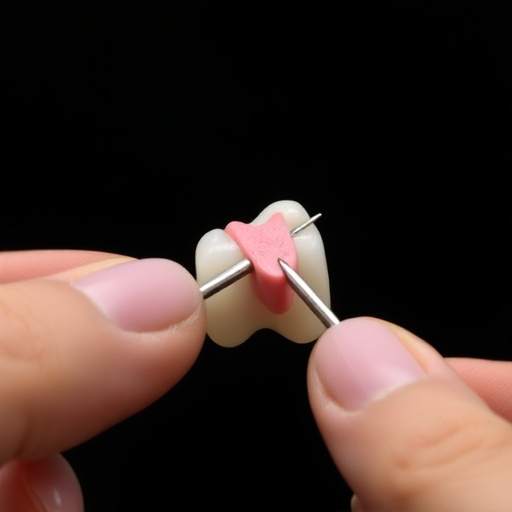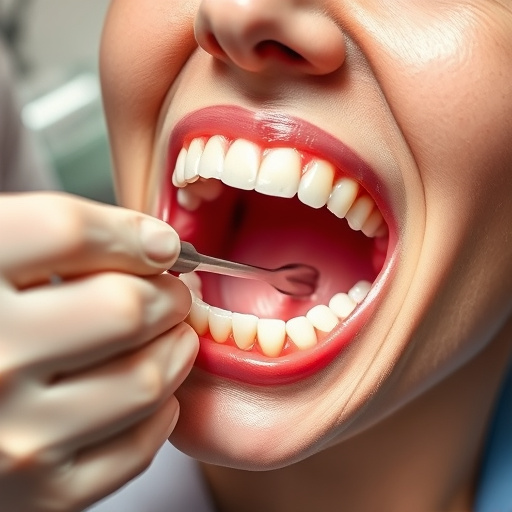Dental Office Technology: Enhancing Case Acceptance Through Streamlined Communication
Dental office technology, including Patient Relationship Management (PRM) software, significantly en…….
In the rapidly evolving digital age, dental care has undergone a significant transformation, largely driven by technological advancements. Dental office technology refers to the array of tools, software, and systems that streamline dental practices, enhance patient experiences, and improve clinical outcomes. This comprehensive article aims to explore the multifaceted world of dental office technology, its global impact, economic implications, cutting-edge innovations, regulatory landscape, challenges, and future prospects. By delving into these aspects, we will uncover how this technology is revolutionizing oral healthcare globally.
Dental office technology encompasses a broad spectrum of tools and solutions designed to optimize dental practice management, patient interaction, and clinical procedures. It includes hardware such as computers, digital cameras, and X-ray machines, as well as software applications tailored for dental practices. The core components can be categorized as follows:
Practice Management Software: These are computer systems that streamline administrative tasks, patient records, scheduling, billing, and insurance claims processing. Examples include Dentrix, Practice Fusion, and DrChrono.
Digital Imaging and Radiography: Digital X-ray machines, intraoral cameras, and facial scan technology enable detailed visualization of dental structures, aiding in diagnosis and treatment planning.
Dental Software for Clinical Use: Specialized software assists dentists during procedures, providing guidelines, reference materials, and real-time data analysis. Endodontic, periodontic, and oral surgery software are examples of this category.
Teledentistry Platforms: These enable remote consultations, diagnosis, and treatment planning through video conferencing, digital imaging sharing, and cloud-based record storage.
Patient Communication Tools: Text messaging, email marketing, and patient portal software enhance communication between dentists and patients, improving appointment reminders, consent forms, and survey feedback collection.
Historically, dental technology has evolved from simple hand tools to complex digital systems over the past few decades. The adoption of computers in the 1980s marked a turning point, leading to early practice management software and digital imaging innovations. Fast forward to today, where artificial intelligence (AI), machine learning, and cloud computing are integrating into dental practices, promising unprecedented efficiency and precision.
Dental office technology’s influence is felt worldwide, with varying degrees of adoption and impact across regions. Here’s a global snapshot:
North America: The United States and Canada have been early adopters, with advanced dental technologies integrated into many practices. Teledentistry has gained traction, especially in rural areas, improving access to dental care.
Europe: Countries like the UK, Germany, and France have seen substantial investment in dental IT infrastructure. Practice management software is widely used, and electronic health records (EHRs) are becoming the norm. AI-assisted diagnostics and robotic surgery are emerging trends.
Asia Pacific: Rapidly growing economies like China, India, and Japan are witnessing a boom in dental technology adoption. Digital imaging and EHR systems are being implemented across urban centers, while rural areas are seeing the introduction of basic tele dentistry services.
Latin America and Middle East: These regions are following a similar trajectory to Asia Pacific, with an increasing focus on digital transformation. Brazil, Mexico, and countries in the Gulf Cooperation Council (GCC) have shown interest in AI-driven dental solutions and improving patient experiences through technology.
Global trends indicate that dental office technology is becoming increasingly standardized, driven by improved connectivity, declining hardware costs, and growing demand for efficient, accessible, and high-quality oral healthcare.
The global dental office technology market is a dynamic sector, characterized by steady growth and diverse investment opportunities. Here are some key economic insights:
| Market Segment | Growth Rate (2022-2027) | Revenue (2022) | Geographic Focus |
|---|---|---|---|
| Practice Management Software | 12.5% | $854.5 million | North America, Europe |
| Digital Imaging & Radiography | 10.2% | $923.7 million | Asia Pacific, North America |
| Dental IT Services | 15.6% | $567.3 million | Global |
| Teledentistry Platforms | 28.7% | $145.6 million | North America, Europe |
Market Dynamics:
Investment Patterns:
Dental office technology has witnessed several groundbreaking advancements that are reshaping oral healthcare delivery:
AI and Machine Learning (ML): These technologies enable automated diagnosis, treatment planning, and predictive analytics. AI algorithms can analyze dental radiographs for caries detection, periodontitis risk assessment, and even predict patient behavior. ML models enhance practice management by automating tasks like coding, billing, and insurance claims processing.
Robotic Surgery: Dental robots assist surgeons in precise procedures, reducing human error and improving outcomes. The Meditab Robot, for example, aids in root canal surgeries, while the Dentist on Demand robot provides remote surgical support.
3D Printing: This technology is revolutionizing dental prosthetics, enabling the customized design and rapid printing of crowns, bridges, and dentures. 3D-printed models offer improved fit, reduced processing time, and cost savings.
Wearable Technology: Smartwatches and mouthguards equipped with sensors can monitor oral health parameters like jaw movement, bite force, and temperature, providing early alerts for potential issues.
Cloud Computing: Secure cloud-based storage and data sharing platforms facilitate seamless collaboration between dentists, specialists, and patients. This enables efficient treatment planning, remote consultations, and quick access to patient records.
Dental office technology development and deployment are subject to various policies and regulations, ensuring patient safety, data privacy, and ethical practices. Key considerations include:
Data Privacy Laws: Regulations like GDPR in Europe, HIPAA in the US, and similar laws worldwide mandate secure data handling practices, consent for data processing, and transparent record storage.
Medical Device Regulations: Dental hardware and software designed as medical devices must adhere to specific standards and obtain certifications from regulatory bodies. The FDA in the US, EMA in Europe, and MHRA in the UK are responsible for ensuring product safety and efficacy.
Telehealth Guidelines: Policy frameworks for teledentistry vary across regions. Many countries have established guidelines for remote patient consultations, including licensing requirements, consent processes, and record-keeping standards.
Intellectual Property (IP) Protection: Developers of innovative dental tech solutions need to safeguard their intellectual property through patents, trademarks, and copyrights to prevent unauthorized use and encourage further innovation.
Despite its numerous benefits, dental office technology faces several challenges and criticisms that must be addressed for widespread adoption:
High Initial Costs: Implementing advanced dental tech solutions can be expensive, deterring smaller practices from adopting new technologies. Subsidies, grants, or leasing models could help overcome this barrier.
Digital Literacy and Training: Dentists and their staff require adequate training to use technology effectively. Ongoing educational programs and user-friendly interfaces are essential for successful integration.
Data Security and Privacy: As dental practices collect sensitive patient data, ensuring its security is paramount. Cyberattacks pose significant risks, necessitating robust cybersecurity measures.
Interoperability Issues: Different dental software systems often lack interoperability, hindering seamless data exchange between practices. Standardized protocols and APIs can facilitate better integration.
Regulatory Compliance: Navigating varying regulatory landscapes across regions can be complex for global dental tech companies. Streamlined regulations and international collaboration can simplify compliance efforts.
In remote areas of Australia, where access to dental care is limited, teledentistry has emerged as a game-changer. The “Smile Bus” project, initiated by the Australian Dental Association (ADA), uses video conferencing and digital imaging to provide dental consultations to schoolchildren and communities in regional and rural locations. This program has improved oral health awareness, reduced anxiety associated with dental visits, and extended access to care for underserved populations.
The British Dental Association (BDA) has been promoting the use of AI for caries detection through radiographic imaging analysis. The “CariX” system, developed by a startup, uses machine learning algorithms to identify early signs of tooth decay with high accuracy. This technology supports dentists in making more informed treatment decisions and could lead to better oral health outcomes for patients.
A leading dental hospital in the US has successfully implemented 3D printing technology for customized denture and crown production. Patients benefit from faster turnaround times, reduced costs, and improved fit compared to traditional methods. This case demonstrates how advanced manufacturing can enhance dental care accessibility and patient satisfaction.
The future of dental office technology is promising, with several growth areas and emerging trends on the horizon:
AI Integration: AI will become increasingly integrated into daily dental practices, improving diagnosis, treatment planning, and predictive analytics. Natural Language Processing (NLP) will enhance patient communication through chatbots and virtual assistants.
Remote Monitoring and Wearable Devices: Advanced wearable sensors and remote monitoring systems will enable continuous oral health tracking, providing early alerts for potential issues and promoting preventive care.
Virtual Reality (VR) and Augmented Reality (AR): VR and AR technologies can enhance patient experiences during procedures, reduce anxiety, and improve dental education through immersive simulations.
Blockchain for Secure Data Sharing: Blockchain technology offers secure and decentralized data storage, ensuring seamless and safe information sharing between dentists, specialists, and patients worldwide.
Dental office technology is undeniably transforming the way oral healthcare is delivered globally. Its impact spans improved patient experiences, enhanced clinical outcomes, streamlined practice management, and better access to care. As technological advancements continue apace, dentists and healthcare providers must stay informed, embrace innovation, and navigate the evolving regulatory landscape.
By addressing challenges, leveraging new technologies, and fostering international collaboration, the dental community can ensure that technology remains a powerful tool for improving oral health worldwide. The future of dentistry is digital, personalized, and accessible to all.
Q: How does dental office technology improve patient care?
A: Dental IT solutions enhance patient experiences through efficient appointments, improved communication, and personalized treatment plans. Teledentistry options extend access to care, while AI-assisted diagnostics enable early detection and more accurate treatment recommendations.
Q: What are the benefits of practice management software for dentists?
A: Practice management software streamlines administrative tasks, automates billing and coding processes, improves patient scheduling, and enhances record keeping. These systems free up time, allowing dentists to focus on patient care.
Q: How does AI impact dental diagnosis and treatment?
A: AI algorithms analyze dental images for caries detection, periodontitis risk assessment, and even predict patient behavior. ML models can suggest treatment plans based on historical data, improving accuracy and efficiency in diagnosis and treatment planning.
Q: What are the data privacy concerns related to dental technology?
A: Dental practices must adhere to strict data privacy laws like HIPAA (US) or GDPR (EU) to protect sensitive patient information. Secure data storage, encryption, and consent management are crucial for maintaining patient trust and compliance with regulations.
Q: How can dental technologies improve access to oral healthcare?
A: Teledentistry, 3D printing, and wearable sensors are revolutionizing access to care, especially in rural or underserved areas. These technologies enable remote consultations, customized prosthetics, and continuous oral health monitoring, reducing barriers to dental care.

Dental office technology, including Patient Relationship Management (PRM) software, significantly en…….

Dental office technology, encompassing software, EHRs, and practice management tools, has dramatical…….